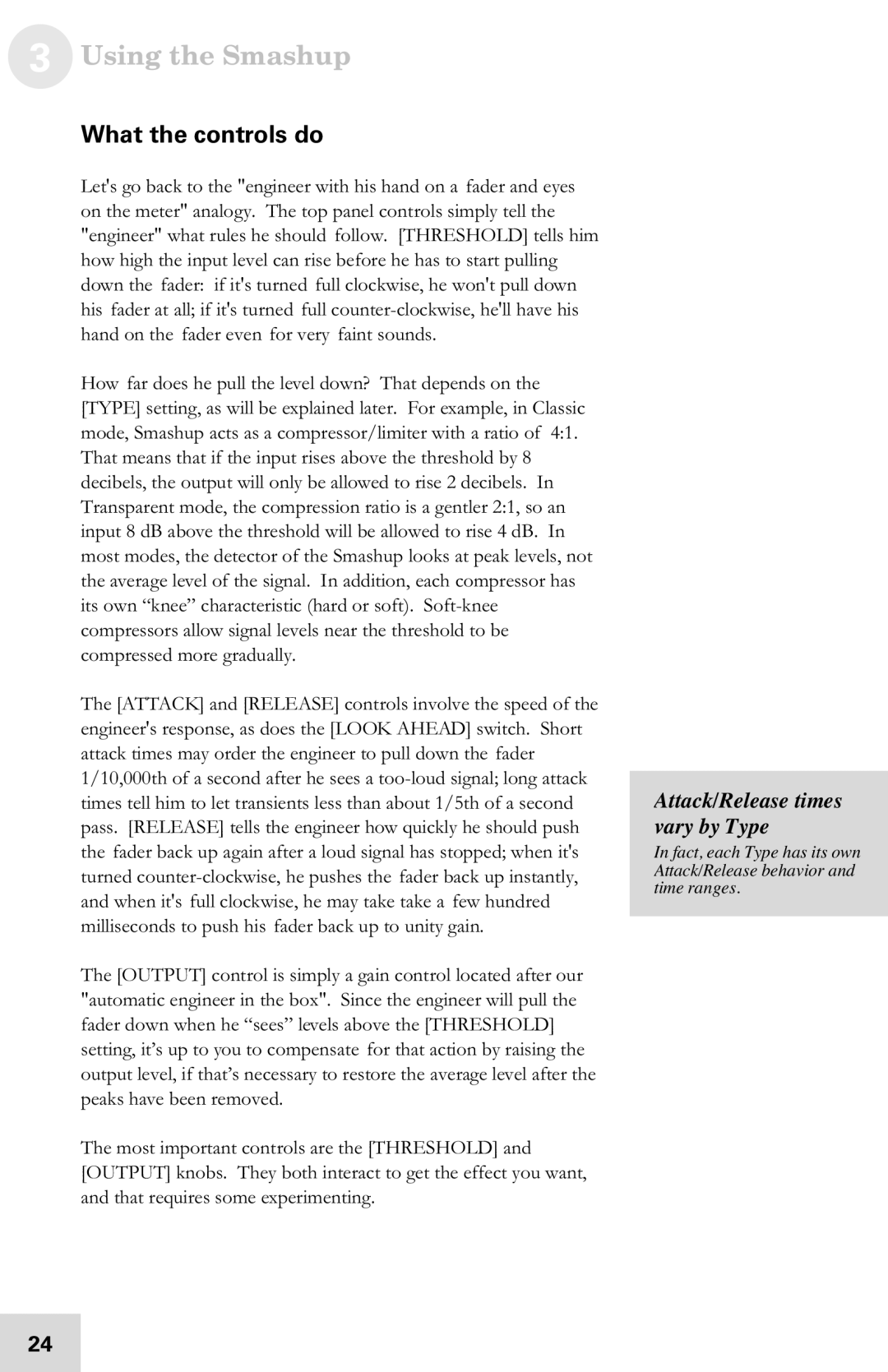
3 Using the Smashup
What the controls do
Let's go back to the "engineer with his hand on a fader and eyes on the meter" analogy. The top panel controls simply tell the "engineer" what rules he should follow. [THRESHOLD] tells him how high the input level can rise before he has to start pulling down the fader: if it's turned full clockwise, he won't pull down his fader at all; if it's turned full
How far does he pull the level down? That depends on the [TYPE] setting, as will be explained later. For example, in Classic mode, Smashup acts as a compressor/limiter with a ratio of 4:1. That means that if the input rises above the threshold by 8 decibels, the output will only be allowed to rise 2 decibels. In Transparent mode, the compression ratio is a gentler 2:1, so an input 8 dB above the threshold will be allowed to rise 4 dB. In most modes, the detector of the Smashup looks at peak levels, not the average level of the signal. In addition, each compressor has its own “knee” characteristic (hard or soft).
The [ATTACK] and [RELEASE] controls involve the speed of the engineer's response, as does the [LOOK AHEAD] switch. Short attack times may order the engineer to pull down the fader 1/10,000th of a second after he sees a
The [OUTPUT] control is simply a gain control located after our "automatic engineer in the box". Since the engineer will pull the fader down when he “sees” levels above the [THRESHOLD] setting, it’s up to you to compensate for that action by raising the output level, if that’s necessary to restore the average level after the peaks have been removed.
The most important controls are the [THRESHOLD] and [OUTPUT] knobs. They both interact to get the effect you want, and that requires some experimenting.
Attack/Release times vary by Type
In fact, each Type has its own Attack/Release behavior and time ranges.
24
